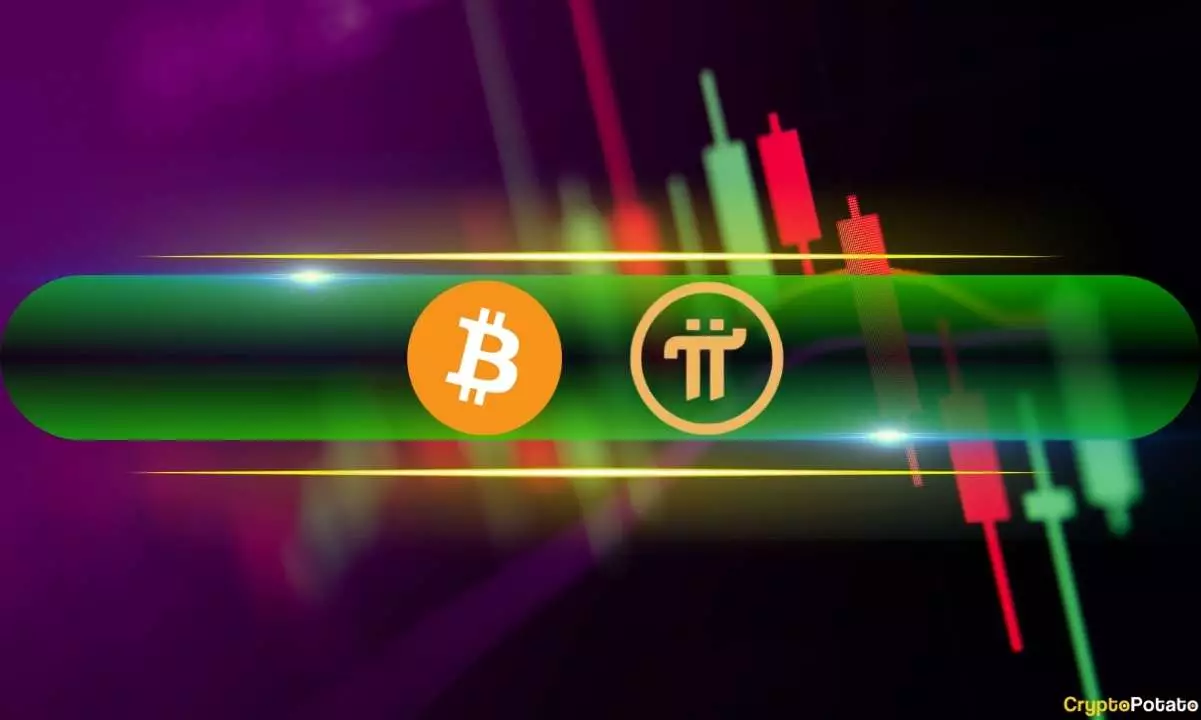Bitcoin’s price action has taken investors on a relentless ride, with the asset facing significant challenges at the pivotal $104,000 mark. It’s crucial to recognize that this isn’t merely a price chart; it’s a representation of invaluable human emotions such as fear and greed. The reported spikes and plummets in Bitcoin’s value reflect broader market sentiments when economic narratives shift. The brief surge above the coveted $100,000 plateau last week sent waves of euphoria through the crypto community, fueled by optimistic reports of a potential trade deal between the US and China. However, this optimism dissipated faster than one can say “market correction,” resulting in a decline that saw Bitcoin fumbling just beneath the six-digit threshold.
The volatility that accompanies Bitcoin often feels more akin to a high-stakes poker game than an investment. The reliance on significant news events, such as trade negotiations or tariffs, reveals an unsettling truth: Bitcoin’s growth is significantly hindered by external factors. The reliance on these macroeconomic developments exposes Bitcoin to severe market corrections as traders reassess their positions. With Bitcoin having historically struggled to maintain support during psychological resistance, one wonders if the decentralized dream has inadvertently tethered itself too closely to global economic policies.
The Altcoin Apocalypse: Consequences of Bitcoin’s Struggle
As Bitcoin teeters, its altcoin counterparts bleed out without mercy. A strikingly brutal landscape has emerged for cryptocurrencies like Ethereum, XRP, and SOL, which have succumbed to formidable price declines. These altcoins are inherently intertwined with Bitcoin, their fates often dictated by its performance. The observed bleed in the altcoin market underscores the fragility of investment confidence, leading to exponential selling pressure. Observing XRP slump alongside other major players, one cannot overlook the stark reality that if Bitcoin fails to regain its footing above significant support levels, the ripple effect could be catastrophic for the entire crypto ecosystem.
While the altcoins have been struggling, finds such as PI’s astonishing 27% nosedive showcase a desperate scramble amidst internal market upheaval. The overarching decline of roughly $100 billion in total market capitalization within a day presents a disconcerting contrast to the grand visions many had for a decentralized future. Are we witnessing the systemic collapse of an ecosystem built on idealism? The question looms larger as these altcoins battle not only external market forces but also internal crises that expose their vulnerabilities.
The Future: Hope or Despair?
As Ali Martinez warns, Bitcoin’s precarious dance with a critical resistance level of $101,600 calls into question the sustainability of its bullish narrative. If the cryptocurrency breaches this crucial threshold, it may well tumble back into five-digit territory—a grim prospect for supporters who pinned their hopes on Bitcoin’s resilience serving as a bulwark against economic uncertainty.
While the overall market landscape may suggest a lingering bullish sentiment, it can quickly flip in a volatile atmosphere. The future remains uncertain, and with a marked increase in Bitcoin’s dominance to 59.6%, one must ponder what this implies for the alternative assets. Will they continue to be viewed simply as Bitcoin’s satellites, forever affected by its gravitational pull, or is there a potential for independence? As investors wrestle with this volatile reality, the outcome will ultimately depend on whether the emotional fervor that fuels the crypto zeitgeist can outlast the tightening grip of economic turbulence.

